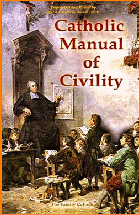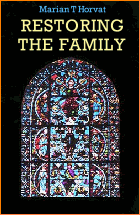Movie Review
 |
 |
 |
 |
 |
 |
 |
Snow White & the Seven Dwarfs:
Some Marvel but Strong Romantic Errors
produced by Walt Disney, 1937,
and the live action remake Snow White, 2025
Elizabeth Anne Lozowski
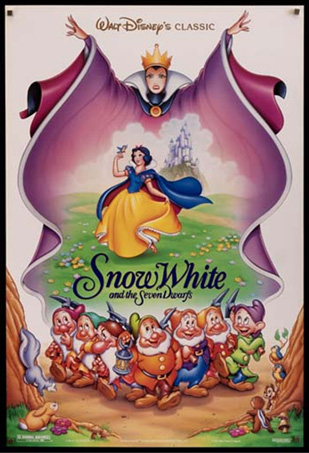
Although at first the cartoons were based on physical artwork – for example, the backgrounds in Snow White were all hand painted and the characters hand drawn – the concept soon led to virtual animation, trapping the viewer in an artificial and disproportioned world. Generally speaking, cartoons distort a child’s view of the world and sense of what is truly beautiful.
Notwithstanding, Snow White and the Seven Dwarfs managed to capture some of the innocence and marvel of the fairy tale, which is why we recommend it in our article on movies acceptable to watch. Walt Disney’s version remains mostly true to the original German fairy tale, recorded by the Grimm Brothers, except that the true love’s kiss and Snow White’s meeting with the Prince were added. Romanticism inspired these bad additions, which will be discussed at the end of this article.
The victory of innocence
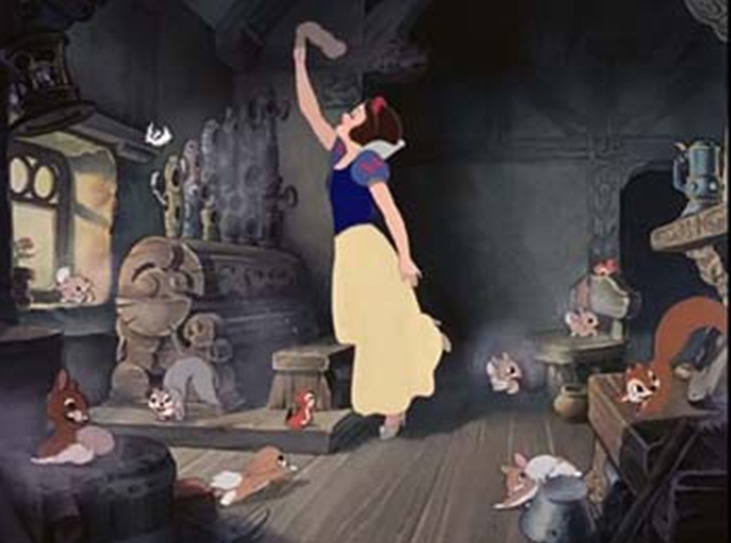
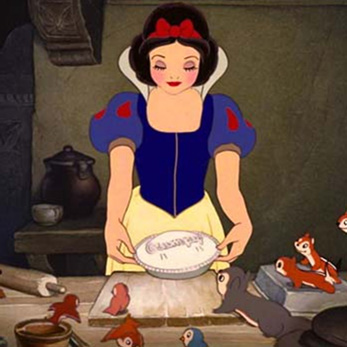
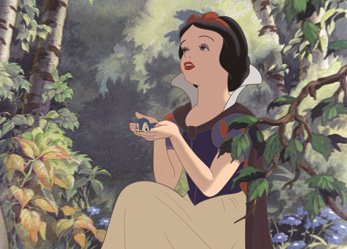
The Evil Queen, on the other hand, is bold, ambitious, vain and powerful. Feminists of today could take her as their idol, for they despise the meekness of Snow White. Yet, the beauty of Snow White – and indeed any fairy tale – lies in the exaltation of virtue above wickedness, the triumph of weakness over strength.
Through obedience, kindness and simplicity, the fairy tale Princess is rewarded after suffering many trials. Her enemies are punished, not by dint of sword and battle, but through the hand of Providence – an allusion to the omnipresence of God, Who deals out justice to evildoers.
Snow White is innocent & feminine
Here note should be made of the difference between the traditional fairy tale and the most recent Disney live-action remake of the film, now showing in theaters. After the release of the movie trailers, many people are criticizing the blatantly terrible remake that has attempted to modernize Snow White by making her a revolted feminist who leads a coup against the Queen and rescues the Prince. Not only is the new Snow White not beautiful or sweet, but also – in an attempt to rectify supposed racism – her skin is not white. The strong negative reaction to this appalling movie is encouraging to see, for it shows that a spark of common sense still remains in some persons who see the idiocy of the liberal agenda.
The new revolted Snow White
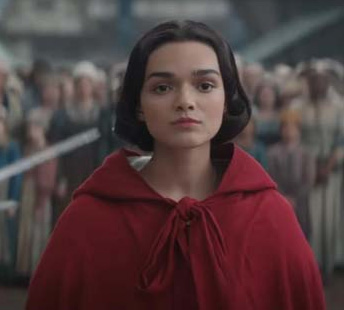
The new Snow White
For example, after Snow White runs away into the woods and meets the woodland creatures, she sings “With a Smile and a Song,” in which she muses: “Remember, you’re the one / Who can fill the world with sunshine. When you smile and you sing /Everything is in tune and it’s spring.” There is a certain truth in the lyrics, in that changing one’s attitude does make others happier and dispels gloom.
However, the words also promote the myth of a natural optimism prevalent in that era: All you have to do is be happy and kind to each other and everything will turn out well. An attitude in which suffering is not understood nor is it valued.
The evil queen & justice
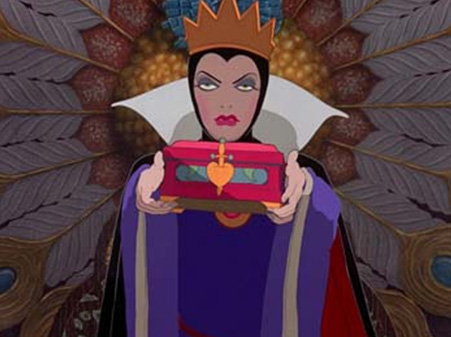
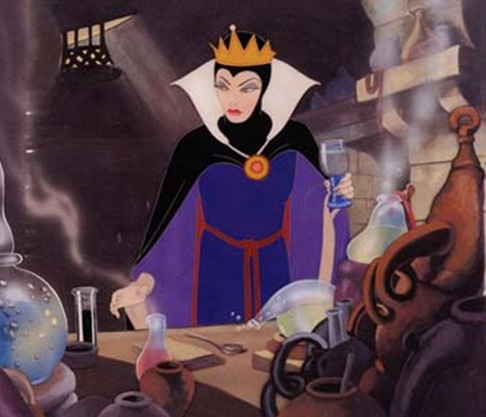

The inclusion of such detailed scenes of the villain’s witchcraft is problematic, in that it can open the viewer to an evil curiosity to enter the world of the Queen. For those inclined towards evil, the prospect of becoming like the evil Queen and gaining power can be enticing. In fact, today many Disney fans adore the fairy tale villains, wearing their merchandise and even imitating them.
Even so, the evil Queen receives no mercy, nor are any excuses given for her behavior, as happens too often in modern films. In the end, justice is meted out to her when a bolt of lightning causes her to fall to her death down a steep cliff as vultures descend to devour her body. Disney does an excellent job in portraying this death, leaving a strong impression of how evil is punished but without including anything morbid or horrific that could harm children’s innocence.
The stark contrast of her death with the reward of Snow White is beautifully done. As Snow White lies in her glass coffin, Spring arrives and with it comes the Prince who wakes her from the spell. He then sets her on his horse and takes her to his castle which rests on the clouds as rays of light illuminate the glorious scene. The impression is truly one of Heaven, for the castle is not bound to the Earth. This is the last picture the viewer sees before the story ends.
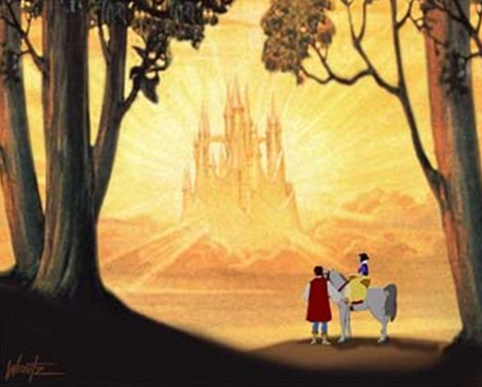
'True love’s kiss'
The concept of “True Love’s Kiss” is really a Disney invention, inspired by the Romanticism of the 18th and 19th centuries. Snow White and the Seven Dwarfs popularized the theme that made a recurring appearance in later Disney movies.
From a Catholic perspective, there is no such thing as “true love’s kiss.” True love is the love of another for God’s sake and has nothing to do with the sensuality of romance. Only spouses are permitted to kiss one another, which should always be done with chastity and reserve. (1)
A kiss is not evil, as demonstrated by the common medieval depiction of the warm embrace of St. Joachim and St. Anne meeting at the Golden Gate. It can, however, lead to sin or be done in a sinful manner, which is why it was not allowed during courtships in the past. The over-romanticization of the kiss very quickly leads to the impurity we see today in the evils of free love and sodomite partners.

Disney also had to introduce Snow White meeting the Prince in the opening scene of the film and falling in love with him. In the traditional fairy tale, Snow White does not meet the Prince but is simply rescued by him because of his admiration for her beauty. Most fairy tales are like this – the beauty of the Princess attracts the Prince, and the Princess always accepts the Prince’s love without expressing a sentimental longing to be loved.
The concept of beauty in a fairy tale implies not simply outward appearances but also the inner beauty of the soul. Romantic emotions and passions of spirit are rarely seen in a good fairy tale. Instead, a good fairy tale reveals truths and inspires the practice of virtue.
The Disney version of Snow White retains some of the good of the fairy tale, but inserts a sentimental interpretation. Sentimentality destroys all that is good, true and beautiful by turning it towards self instead of directing it towards God. As Catholics, we can take what is good in Snow White and the Seven Dwarfs and use it to help foster our ideals, but we must also be aware of the subtle traps laid to ensnare the innocent.
- The kiss here mentioned of course is not referring to the greeting kiss on the cheek, common in many cultures. It is the kiss on the mouth that should be reserved for spouses.
Posted March 28, 2025

______________________
______________________



